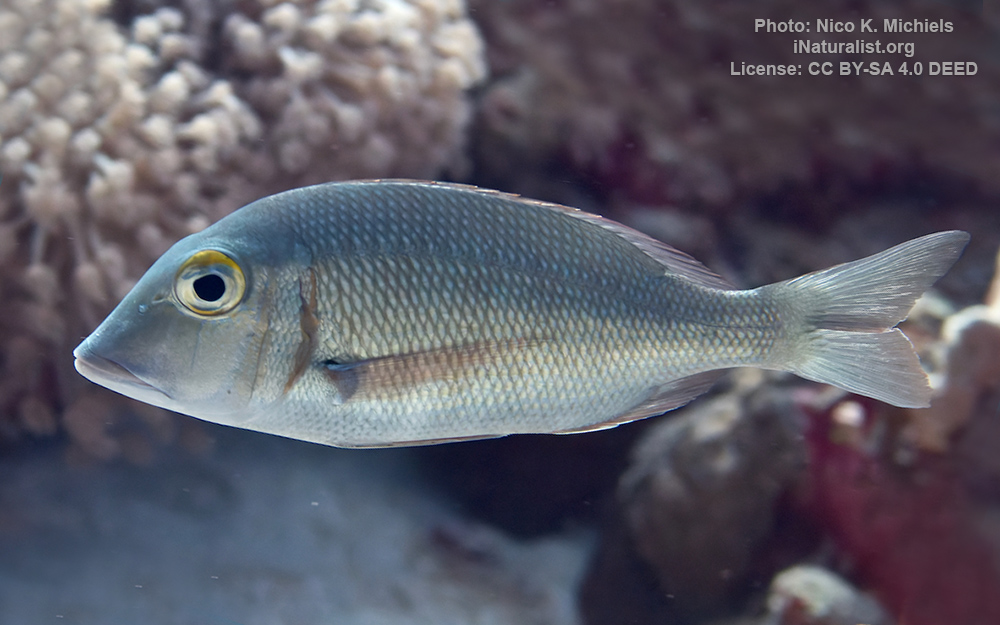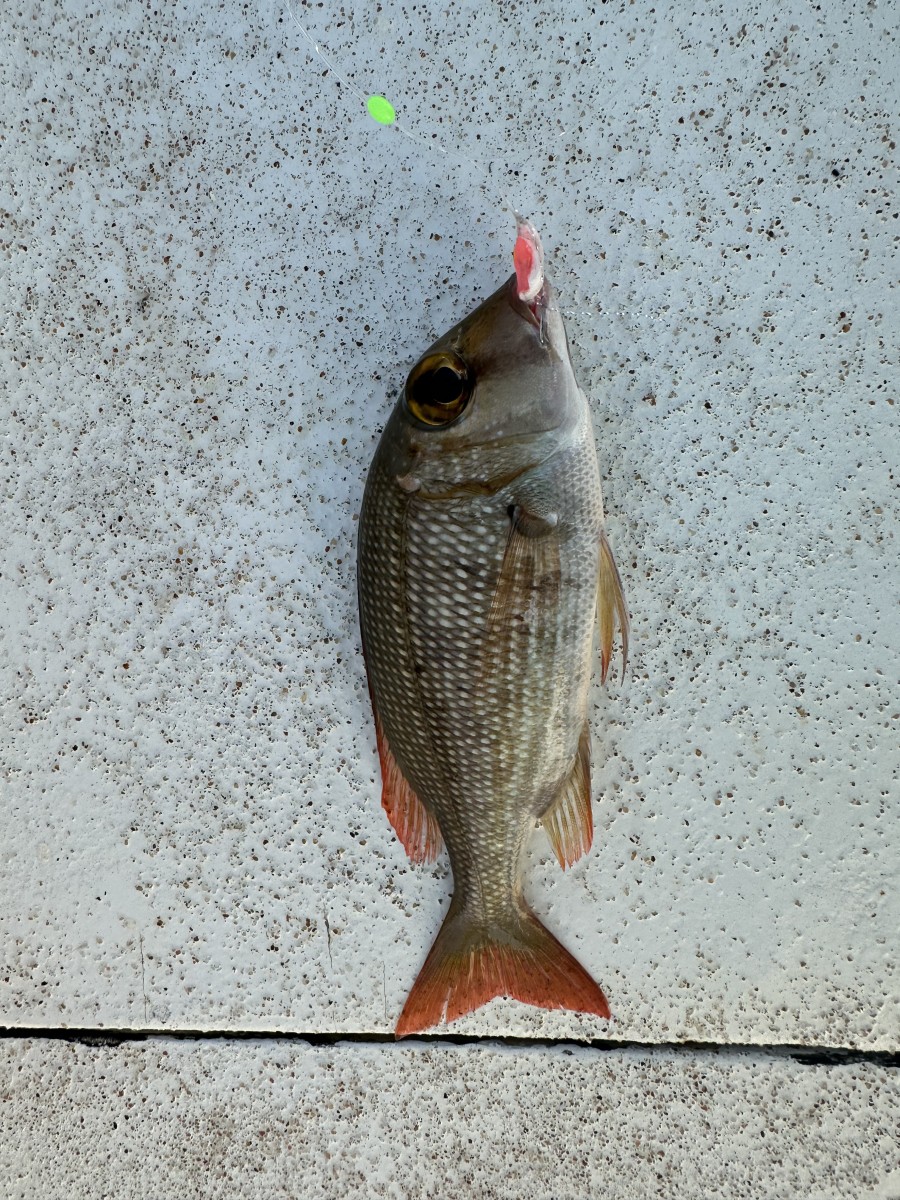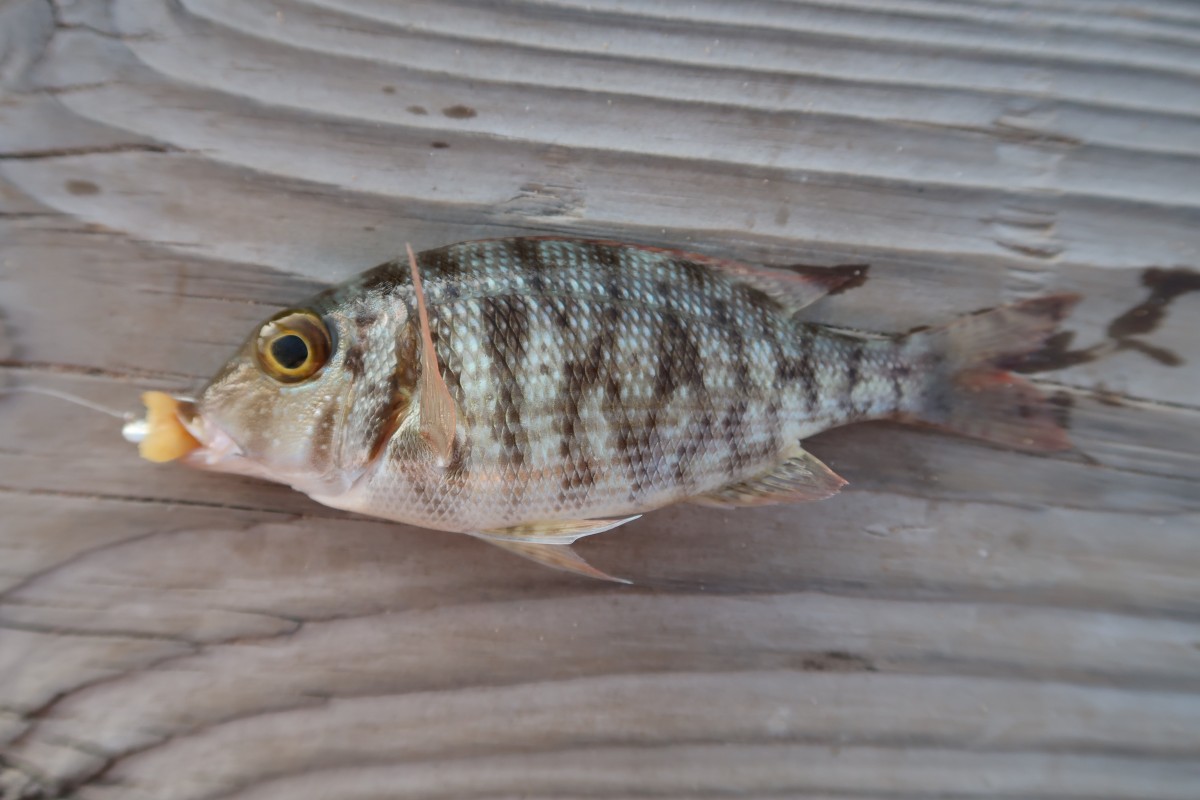Snubnose emperor
(Lethrinus borbonicus)

Image source: Nico K. Michiels | inaturalist.org
Classification
General data
Lethrinus borbonicus has its dorsal fin supported by 10 spines, the 4th or 5th spine being the longest, and 9 soft rays while the anal fin is supported by 3 spines and 8 soft rays. It has a moderately deep body with a depth fitting into its standard length 2.5 to 2.8 times. The space between the large eyes is normally convex and it has a moderately short, blunt snout with a straight profile. The teeth in the sides of the jaws are molar-like and the outer surface of the maxilla has a ridge. The axillaof the pectoral fin is fully scaled.
The overall colour is dark grey or yellowish with a whitish ventral surface with indistinct, broken dark bars. The paired fins are white or pinkish, the dorsal and anal fins are blotched white or yellowish with a reddish margin and the caudal fin has poorly defined reddish bands.
This species has a maximum published total length of 40 cm (16 in), although 25 cm (9.8 in) is more typical.
Lethribus borbonicus is found in the Western Indian Ocean. It is distributed along the coast of eastern Africa from the gulf of Suez and Gulf of Aqaba south through the Red Sea and south to Sodwana Bay in South Africa. It is found around Madagascar, the Comoro Islands, the Seychelles, the Mascarenes and around the Arabian Peninsula and the Persian Gulf as far east as Pakistan.
This species is found at depths between 1 and 40 m (3 ft 3 in and 131 ft 3 in) in areas of sandy substrates, in the vicinity of reefs, during the day when they may also gather in small groups. At night they are solitary and hunt over reef flats and slopes












